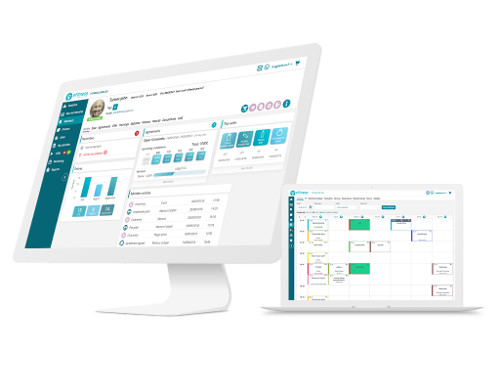American author John Steinbeck once echoed ‘Ideas are like rabbits, you get a couple and learn how to handle them, pretty soon you have a dozen.’
As you know, ideas within the fitness industry, both amazing and abysmal, do tend to snowball and escalate at an electrifying pace. As you find yourself having those moments of inspiration, just think about what you can do to ensure your idea firstly, comes to fruition and secondly, doesn’t flop.
The individuals who turn their conceptualisations into reality become the most successful entrepreneurs and the Health Clubs who convert their abstract ideas into business projects become the market leaders.
How can you ensure you don’t let your big idea escape you? Throughout this post, I’ll offer some tips for how you can make sure your next big idea actually gets off the ground.
Mind the Project Plateau
Firstly, business in all industries spend too much time putting ideas off as they instead choose to prioritise the endless flow of other things coming their way. As a result, creative ideas are put on the backburner at the expense of other ‘more important’ projects decided by the hierarchy at that moment in time. But why does this happen?
In truth, it takes effort, assertion, energy and mental toughness to steer an idea forward. We’re so lost in our day to day bubble that when it comes to shifting a whole businesses mindset to concentrate primarily on a brand new idea it can be exceedingly difficult, especially if there is not a quick fix for making instant profit.
The project plateau is the point at which innovation and creativity within your organisation dwindles and diminishes as deadlines take centre stage. If you’re not careful, this process repeats itself time and time again and in the end, ultimately prevents you from ever reaching your long term goals.
For example, say your Health Club wants to design a bluetooth wrist-band that not only allows your members to access the gym but is also able to perform other key functions such as opening lockers, logging reps on machines via bluetooth sensors and monitoring heart-rate/calorie burning activity. Ideally, you want the colour of the wrist-band to change depending on the person’s experience level so your staff can easily acknowledge who is a beginner in the gym.
Initially, your team like the BIG BAND idea, your business development staff run some competitor analysis and your marketing team may draw up a prototype of what the wristband looks like and how it behaves. However, it’s October so you also have to run a 10 day Halloween promotion on gym membership and Personal Training, the finance team must additionally prepare their end of month report. The IT team has one million things going on as usual as a new club is opening in November and the COO must oversee all these areas, very quickly focus throughout your organisation has shifted.
Unless your ideas are carried through and forced to cut through the clutter of the mundane day to day operations, they are just air and words. Thoughts can only become things when force is applied, and that requires leaders within your organisation to step up to the plate. As the owner of Basic Fit, Rene Moos said at the FitNation Conference – act, don’t wait.
Find time to think.
Although we don’t often realise, in the office, most of our work-flow is simply reactive, not proactive. We sit responding to emails, WhatsApp threads, Facebook WorkSpace threads, google drive documents, Trello boards and Slack communications. When we’re not doing that, we’re on conference calls and in team meetings which themselves can often be more reactive than proactive.
OK, so these things may need to be taken care of but often energy needs to be channelled and used in a much more dynamic and enterprising way. In order for that to happen, you need to create windows of time to truly think – cut back on dealing with all instant messages and incoming communications for 2 hours per day and use this as a time for you and your team to generate thoughts for long term projects.
If the Health Club in the example above was serious about the BIG BAND idea then they should spend an hour per day at least, regardless of the month, to ensure it remains a key business focus and doesn’t become a victim to the project plateau.
Green Light Thinking
During my time in a former role, I was introduced to the concept of Green Light thinking. This process encourages your team to generate as many ideas as possible without censorship, opinions or disregard. It inspires people to think of solutions that they wouldn’t have thought of others. As preposterous as some of the ideas sound, you also get some hidden gems. This allows for a real creative approach for brainstorming.
For example, if you discussed ‘ways you could market your business except for Social Media and Email’, green light thinking would allow employees to say anything, like ‘aeroplanes in the sky’, ‘flash-mobs in the street’, ‘supermarket shopping trolleys’. While some suggestions may be more ludicrous than others, it allows people to say anything and expands people’s minds.
Red Light thinking
After your Green Light thinking session has been carried out, you then need to follow it up with a period of Red Light thinking- which is where you start to critique each idea. The purpose of Red Light Thinking is to determine which ideas are the best when all practical factors are considered. Once you have decided on which ideas still have potential, you should ask ‘if we genuinely adopted this, what would success look like?’
During your Green Light thinking session, one person may have suggested advertising your Personal Training offering to all your current members via a mobile phone network provider. As this is followed up with a period of Red Light Thinking, your team may decide that this idea may be worth exploring, but before you go all guns blazing, you need to decide how many incremental units of Personal Training you want to make through such advertising and what your expected Cost Per Sale would be. Understanding both these would allow you to determine a budget for the campaign and at that point, you could see whether the campaign would be really worth time and investment.
Take action
Once you have established what success looks like, you need to start implementing a step by step plan of exactly how you are going to get there – and you need to stick by it. You may experience hurdles along the way such as time restraints, but you need to be clear about how you will get around these, after all, if you let other projects and assignments get in the way, you’ll soon be back to square one.
You also need to be mindful of costs you may incur along the way. For example, if your gym has decided it wants to expand its presence among the active ageing community through using specialist equipment focusing on improving motor skills, manual dexterity and mobility, then you need to know firstly, exactly how much all the equipment will cost per location, and secondly, how you expect to make that money back and in what time frame. If you can confidently state how you’ll gain a return on investment, which is backed up by machine learning data, then don’t be afraid to run with your idea and spend the cash needed.
Be optimistic
Ultimately, making ideas work all comes down to having an optimistic mindset. In business, there are ‘yes’ people (typically in marketing) and ‘no’ people (usually they work in finance). The ‘Yes’ people support ideas and get excited by them, the ‘No’ people express initial concern and are highly questionable in the initial stages.
It can be useful to have both types of people in business but when it comes to working on your next big idea, you should get your ‘Yes’ people on board early. You have two choices with the ‘No’ people. You can either try to limit their involvement as much as possible in the early stages or you can make a special effort to show them why you are investing time in your idea. I would always opt for the latter.
The more the people in your organisation talk about your goals, the sooner you will achieve them.
Does your Health Club have any issues with bringing ideas to life? Let us know just how YOU ensure you make things happen.


